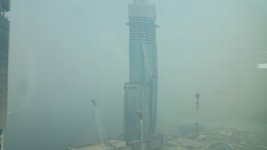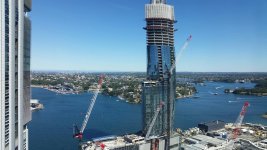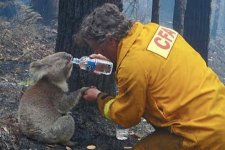Anyone here understand the science of bushfire smoke?
We have had an apocalyptic bushfire season in Australia and I don't want to debate the causes with trolls.
But I am interested to learn more about the consequences.
In my home town of Canberra the air quality has been worse than third world.
Extremely bad levels of PM 2.5 (small Particulate Matter that is a serious health hazard).
Curiously, when there is dense visible smoke sometimes there is obvious "smoke" smell and sometimes not.
The PM 2.5 level doesn't seem to correlate with the smell.
So it's difficult to know how unhealthy the air is and when to open windows to cool the house.
Or whether to use the evaporative cooler (which sucks in outside air but doesn't clean it much).
The ultimate answer is to add a HEPA filter to the HVAC system.
Quite a bit of pressure drop and not cheap filters, anyone have experience with this?
David
We have had an apocalyptic bushfire season in Australia and I don't want to debate the causes with trolls.
But I am interested to learn more about the consequences.
In my home town of Canberra the air quality has been worse than third world.
Extremely bad levels of PM 2.5 (small Particulate Matter that is a serious health hazard).
Curiously, when there is dense visible smoke sometimes there is obvious "smoke" smell and sometimes not.
The PM 2.5 level doesn't seem to correlate with the smell.
So it's difficult to know how unhealthy the air is and when to open windows to cool the house.
Or whether to use the evaporative cooler (which sucks in outside air but doesn't clean it much).
The ultimate answer is to add a HEPA filter to the HVAC system.
Quite a bit of pressure drop and not cheap filters, anyone have experience with this?
David
I looked into upgrading filtration this past summer as part of my AC installation.
From what I understand, if it's an older hot air furnace not designed for it, installing a more restrictive filter will cause damage. So installing one of the new thicker filters permanently was not recommended. What is OK is to temporarily replace the the thin filter. So put in the fancy HEPA filter, leave it in for a while, then pull that out and put a standard filter in for long term.
From what I understand, if it's an older hot air furnace not designed for it, installing a more restrictive filter will cause damage. So installing one of the new thicker filters permanently was not recommended. What is OK is to temporarily replace the the thin filter. So put in the fancy HEPA filter, leave it in for a while, then pull that out and put a standard filter in for long term.
The PM 2.5 level doesn't seem to correlate with the smell.
You should not focus only PM2.5 levels, there are also some Nox, benzene, ethylbenzene, naphthalene, toluene, formaldehyde, acetaldehyde and acrolein...
Your lungs are attacked by the particles and all your others internal organs are also attacked simultaneously by some countless nocive substances and that is also why a lot of smokers are "curiously" affected by pancreatic deseases.
Your fires sadden me.
Here in Maine a lot of folks deliberately burn wood to stay warm. Weather is only freezing so they don't burn all day. At start-up their fires *stink*. My regular neighbor could build a hot fire but he is away and his house-sitter makes stinky fires.
For $311 shipped we got a whole-house HEPA filter. It makes a real difference. Even the Low speed works well. When neighbor has just started a smudge, we bump it to Medium. I don't have much faith in "sensors" but this last time I noticed the sensor had gone red before we went to manually speed-up, I may try the Auto setting.
Coming off a spell of bronchitis I think the money well-spent.
Coway Airmega 400 True HEPA and Activated Carbon Filter Air Purifier
Model # AP-2015F $ 310.67
Here in Maine a lot of folks deliberately burn wood to stay warm. Weather is only freezing so they don't burn all day. At start-up their fires *stink*. My regular neighbor could build a hot fire but he is away and his house-sitter makes stinky fires.
For $311 shipped we got a whole-house HEPA filter. It makes a real difference. Even the Low speed works well. When neighbor has just started a smudge, we bump it to Medium. I don't have much faith in "sensors" but this last time I noticed the sensor had gone red before we went to manually speed-up, I may try the Auto setting.
Coming off a spell of bronchitis I think the money well-spent.
Coway Airmega 400 True HEPA and Activated Carbon Filter Air Purifier
Model # AP-2015F $ 310.67
Hi Dave you might want to check out inovair's site. I have one of their portable E8 filters which I purchased a few years ago and have been very happy with it. I suspect that with the fires this year that the carbon filter is just about ready for replacement (was probably getting close anyway). We just use it in the bedroom at night. I think that they have some options to go into a ducted system as well. InovaAir(R) Australia: Air Purifier Systems
Tony.
Tony.
...From what I understand, if it's an older hot air furnace...
I don't have any furnace, use passive solar to heat and have an AirCon and fan but planned to install a more integrated system.
You should not focus only PM2.5 levels, there are also some Nox, benzene, ethylbenzene, naphthalene, toluene, formaldehyde, acetaldehyde and acrolein...
Yes, that was more or less my question.
I only have data for PM 2.5, PM10 and NOx.
PM 2.5 correlates with PM 10 and is the main particulate problem, so it's what I focus on.
NOx level is OK.
But I have no data for nasty benzo-aromatics so I assume if I can smell them it's bad.
After all, that's where the term "aromatic" for benzo type chemicals came from.
Is that the term in French too?
Your fires sadden me.
Thank you, I wish they saddened the politicians sufficiently to make them take some actual useful action.
...Model # AP-2015F $ 310.67
Looks a fine unit but expensive in Australia.
I had an electrostatic on my last AC in addition to the conventional filter.
I hadn't considered electrostatic, know the theory but not what's practical.
I will check it out.
...check out inovair's site.
Hi Tony
Thanks for the review, I had already seen these and they look excellent.
Unfortunately the site says they are now sold out and back ordered for many weeks.
You did well to have one in advance, hope it stays OK for you in Sydney.
In Canberra any wind shift to clear the smoke means 40 C and dust instead.
Best wishes
David
Hi Dave, things have not been too bad the last week or so, but we had two weeks of terrible smoke. At the moment it is just hot and muggy but no rain. Had a brief downpour on Christmas day but that's it.
Edit: two photos attached looking out the window at work. First was the worst I saw it get. Second on a fairly clear day for comparison.
Tony.
Edit: two photos attached looking out the window at work. First was the worst I saw it get. Second on a fairly clear day for comparison.
Tony.
Attachments
Last edited:
Yes, that was more or less my question.
I only have data for PM 2.5, PM10 and NOx.
PM 2.5 correlates with PM 10 and is the main particulate problem, so it's what I focus on.
NOx level is OK.
But I have no data for nasty benzo-aromatics so I assume if I can smell them it's bad.
After all, that's where the term "aromatic" for benzo type chemicals came from.
Is that the term in French too?
David
All my documents are in french, and my traduction is performed by google
So instead of hurting linguists and specialists, here is some reliable measurments for a stick of insense and a candle, wood fires are terribly worse (but i can't find my documents right now) there are some very interesting Canadian documents on their governement websites, i've lost my links.
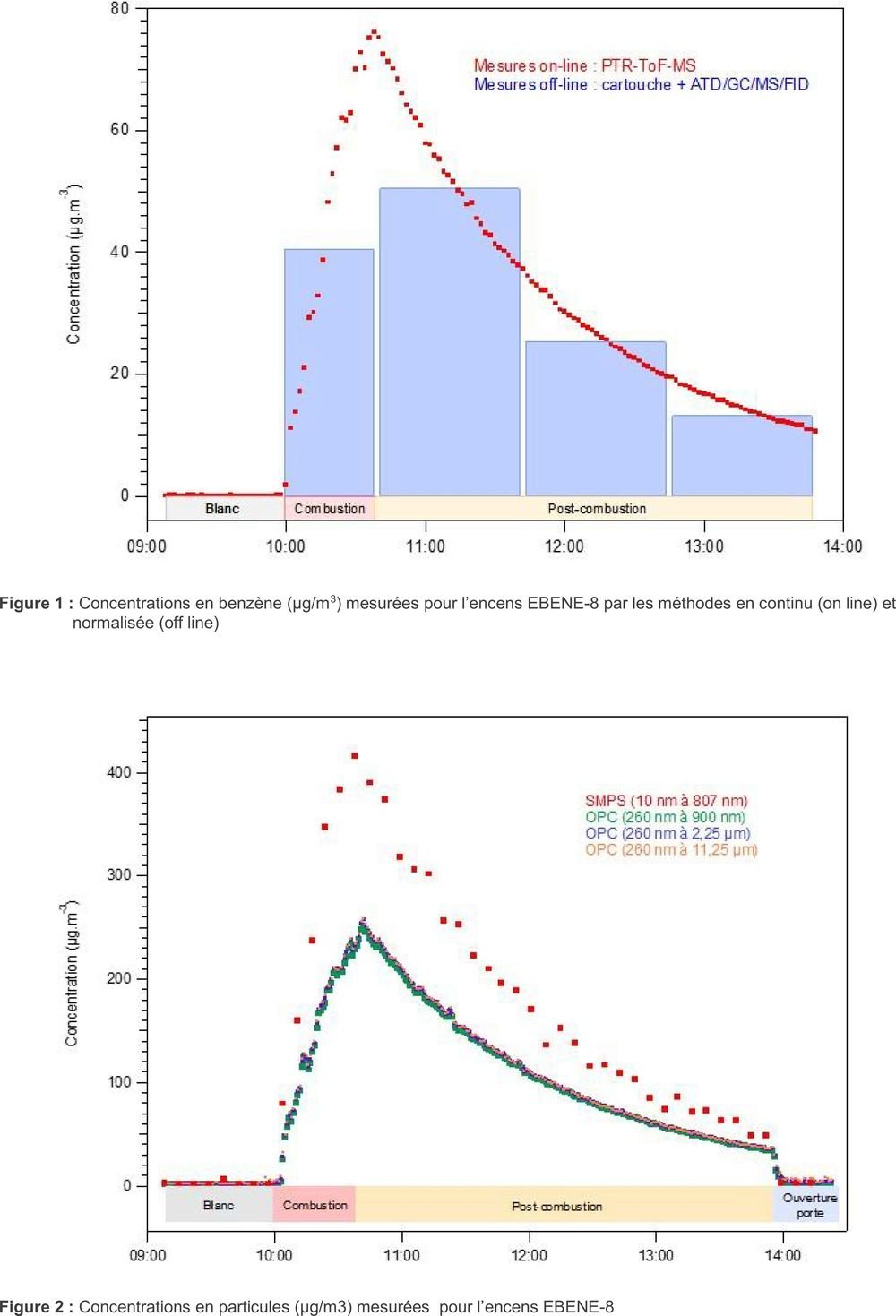
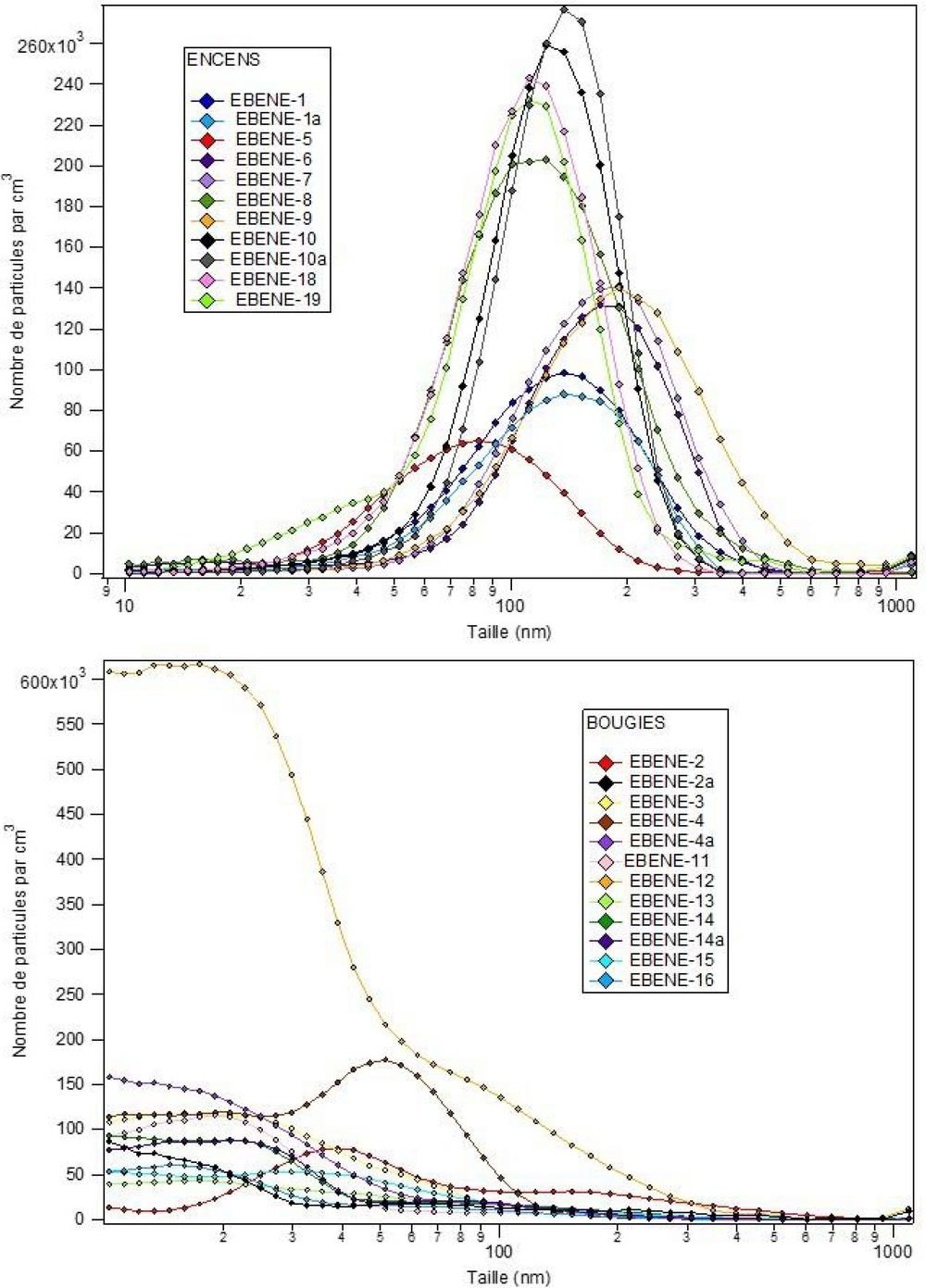
Last edited:
Edit: two photos attached...
Canberra today is even worse than your first photo.
I am lost for words.
The Inovaair unit that you recommended is still back ordered but I should receive at least their HEPA filter in a week or so.
I will try to hack a purifier around the filter, I have a spare blower fan unit and duct tape, I don't care what I have to use for panels.
Best wishes
David

Last edited:
First the Amazon, now Australia, it seems that things are going from bad to worse in the world, but fools still do not understand the seriousness of the "problem of climate change"
Around 500 million dead animals (kangaroos, koalas, birds, etc, etc. etc.) and loss of human lives, homes, etc.
A true apocalypse, but a girl who raised her voice on the subject "is not qualified to speak seriously" of the subject according to the leaders of the world powers.
Sad, very sad ....
Australia wildfires: Here's what you need to know about the deadly blazes - CNN
Around 500 million dead animals (kangaroos, koalas, birds, etc, etc. etc.) and loss of human lives, homes, etc.
A true apocalypse, but a girl who raised her voice on the subject "is not qualified to speak seriously" of the subject according to the leaders of the world powers.
Sad, very sad ....
Australia wildfires: Here's what you need to know about the deadly blazes - CNN
academia50;6032578[url=https://edition.cnn.com/2020/01/01/australia/australia-fires-explainer-intl-hnk-scli/index.html said:Australia wildfires: Here's what you need to know about the deadly blazes - CNN[/url]
That is a very reasonable summary, thank you for the update on how the rest of the world sees it.
My only comment would be that they only hint at the truth when they put quotes around our Prime Minister's talk of "sensible" efforts to reduce carbon emissions.
They don't explain that "sensible" means "none if we can get away with it".
Best wishes
David
Last edited:
Best wishes
David
Thank you, the same for you, that despite the drama in your country, you can have a good year.
Have you noticed that the worst recent fires (Amazon-Australia) have occurred in similar tropics?
My reasoning is that global warming and the destructive hand of man (they throw the stone and hide the hand) are combined in an ominous symbiosis.
Both here and there, at that height of the Tropico de Capricornio the rainforest ecosystems - which are still there - are very fragile. Natural fires have existed for millennia, nature made up for it and everything recovered. But, in these times, guess what? It is used as an excuse for predation!
Intentional fires are caused (alliances - explicit or fortuitous, it does not matter - between timber industries and agricultural interests) and then repeat as justifying these criminal acts:
"Fire always was"
Or if you prefer, "I kill you because I have suspicions that you want to kill me!"
When I was young a very repeated phrase around here in a cartoon for children (children?, Ha, I think for adults, for those who still want to keep some of the innocence and illusions of when we were children) called Mafalda, was " Stop the world, I want to get off. " It reminds me of Greta.
Attachments
" Stop the world, I want to get off. "
Stop the World – I Want to Get Off - Wikipedia
Stop the World – I Want to Get Off - Wikipedia
" Stop the world, I want to get off. "
Stop the World – I Want to Get Off - Wikipedia
According to Oscar Levant, the title of the work was derived from a graffiti. (1)
Según Oscar Levant , el título de la obra se derivó de un graffito . [1]
Quino is likely to have incorporated that universal language (graffiti) for his character Mafalda
Quino - Wikipedia
The fire in Australia killed half of the healthy population
Koalas: towards definitive extinction
The fire killed 25 thousand koalas not infected by a deadly bacteria. The number of dead people was expanded to 23, and 15 thousand homes destroyed.
There are already 23 people killed and more than 480 million animals killed during the fires that hit Australia. In addition, there are about 15,000 homes destroyed by fire. According to Prime Minister Scott Morrison, who faces harsh criticism, the situation is "catastrophic." Within the number of dead animals, there are protected species. In the last hours 25,000 healthy specimens of koalas died (the species is infected by a bacterium), half of the total species that is considered extinct.
"The next 48 hours will be incredibly difficult," Australian Prime Minister Scott Morrison had said Friday regarding forest fires that plague much of Australian territory. Between Friday night and Sunday afternoon, the death toll rose from 16 to 23 people, while about 15,000 homes are destroyed. The llamas, which kept their focus on the state of New South Wales, located on the eastern coast of the country, began to spread south. On its way, the fire reached Kangaroo Island, where one of Australia's most important animal reserves was located; out of a total of 50,000 protected koalas, almost half died.
Ya son 23 las personas fallecidas y más de 480 millones los animales muertos durante los incendios que azotan a Australia. Además, hay cerca de 15.000 viviendas destruidas por el fuego. Según el primer ministro Scott Morrison, que enfrenta duras críticas, la situación es "catastrófica". Dentro de la cifra de animales muertos, se encuentran especies protegidas. En las últimas horas murieron 25.000 ejemplares sanos de koalas (la especie se encuentra infectada por una bacteria), la mitad del total de la especie que se considera en extinción.
"Las próximas 48 horas serán increíblemente difíciles", había dicho el viernes el primer ministro australiano Scott Morrison en relación a los incendios forestales que azotan buena parte del territorio australiano. Entre la noche del viernes y la tarde del domingo, el número de fallecidos se elevó de 16 a 23 personas, mientras que son cerca de 15.000 las casas destruidas. Las llamas, que mantenían su foco en el estado de Nueva Gales del Sur, ubicado en la costa oriental del país, comenzaron a propagarse hacia el sur. En su camino, el fuego alcanzó la Isla Canguro, donde se encontraba situada una de las reservas de animales más importante de Australia; de un total de 50.000 koalas protegidos, murieron casi la mitad.
“Esta última población grande y aislada tiene una importancia significativa para el futuro de la especie. Es posible que necesitemos los koalas de Isla Canguro para repoblar poblaciones en declive”; la cita se desprende de un estudio presentado en junio de 2019 por científicos de la Universidad de Adelaida. Mucho antes de que comenzaran los incendios, los investigadores revisaron la salud de los koalas de Isla Canguro y encontraron que estaban libres de la bacteria Chlamydia Pecorum, una de las principales causas que llevan al koala a encontrarse en grave peligro de extinción. Además de causar esterilidad, la bacteria puede ser mortífera.
La esperanza era que estos koalas se reprodujeran para poblar otras zonas del país. La Fundación Australiana del Koala anunció este año que la especie se hallaba en "extinción funcional", es decir, que ya no jugaba ningún rol relevante en el ecosistema. Si a esto se le suma el hecho de que, según estimaciones, el 80 por ciento de los bosques de eucaliptos, árbol del que se alimenta el koala, fue destruido por los incendios, el destino de la especie parece ir hacia la extinción definitiva.
La muerte de estos ejemplares se suma a una cifra alarmante: según la Universidad de Sidney, son más de 480 millones los animales fallecidos durante los incendios. Los investigadores llegaron a esta cifra estimada a partir del calculo entre la densidad de la población de animales y la extensión de las zonas afectadas por los 150 incendios que se encuentran activos. Así y todo, según Crhis Dickman, científico responsable del estudio, "las estimaciones son muy conservadoras, el número total de fallecidos puede ser superior al de estos primeros cálculos". Además, afirmó que el cálculo solo incluyó mamíferos, reptiles y aves. Desde la Universidad también afirmaron que ya son más de cinco millones las hectáreas de vegetación calcinadas por el fuego.
Recién ahora, con los incendios fuera de control, el primer ministro anunció que movilizará 3.000 reservistas y alquilará cuatro hidroaviones, aunque se teme que sea tarde y las críticas sobre su accionar no se detienen. Según expertos, los incendios se originaron por una doble combinación inédita, posibilitada por los efectos del cambio climático en el país: una sequía y un aumento de temperaturas sin precedentes. Sin embargo, esta situación estaba prevista. Según Scott Mullins, ex comisionado de los equipos de bomberos y rescate de Nueva Gales del Sur, "en abril, junto con otros 28 ex jefes de bomberos, tratamos de advertirle al primer ministro y no nos escuchó”. Ante las presiones de los ambientalistas, Morrison, que había asegurado que los incendios no tenían nada que ver con el cambio climático, debió anunciar en medio de la crisis que Australia "cumplirá en 2030 el compromiso de reducir un 26% las emisiones de gases contaminantes".....
Koalas: hacia la extincion definitiva | El incendio... | Pagina12
Koalas: towards definitive extinction
The fire killed 25 thousand koalas not infected by a deadly bacteria. The number of dead people was expanded to 23, and 15 thousand homes destroyed.
There are already 23 people killed and more than 480 million animals killed during the fires that hit Australia. In addition, there are about 15,000 homes destroyed by fire. According to Prime Minister Scott Morrison, who faces harsh criticism, the situation is "catastrophic." Within the number of dead animals, there are protected species. In the last hours 25,000 healthy specimens of koalas died (the species is infected by a bacterium), half of the total species that is considered extinct.
"The next 48 hours will be incredibly difficult," Australian Prime Minister Scott Morrison had said Friday regarding forest fires that plague much of Australian territory. Between Friday night and Sunday afternoon, the death toll rose from 16 to 23 people, while about 15,000 homes are destroyed. The llamas, which kept their focus on the state of New South Wales, located on the eastern coast of the country, began to spread south. On its way, the fire reached Kangaroo Island, where one of Australia's most important animal reserves was located; out of a total of 50,000 protected koalas, almost half died.
Ya son 23 las personas fallecidas y más de 480 millones los animales muertos durante los incendios que azotan a Australia. Además, hay cerca de 15.000 viviendas destruidas por el fuego. Según el primer ministro Scott Morrison, que enfrenta duras críticas, la situación es "catastrófica". Dentro de la cifra de animales muertos, se encuentran especies protegidas. En las últimas horas murieron 25.000 ejemplares sanos de koalas (la especie se encuentra infectada por una bacteria), la mitad del total de la especie que se considera en extinción.
"Las próximas 48 horas serán increíblemente difíciles", había dicho el viernes el primer ministro australiano Scott Morrison en relación a los incendios forestales que azotan buena parte del territorio australiano. Entre la noche del viernes y la tarde del domingo, el número de fallecidos se elevó de 16 a 23 personas, mientras que son cerca de 15.000 las casas destruidas. Las llamas, que mantenían su foco en el estado de Nueva Gales del Sur, ubicado en la costa oriental del país, comenzaron a propagarse hacia el sur. En su camino, el fuego alcanzó la Isla Canguro, donde se encontraba situada una de las reservas de animales más importante de Australia; de un total de 50.000 koalas protegidos, murieron casi la mitad.
“Esta última población grande y aislada tiene una importancia significativa para el futuro de la especie. Es posible que necesitemos los koalas de Isla Canguro para repoblar poblaciones en declive”; la cita se desprende de un estudio presentado en junio de 2019 por científicos de la Universidad de Adelaida. Mucho antes de que comenzaran los incendios, los investigadores revisaron la salud de los koalas de Isla Canguro y encontraron que estaban libres de la bacteria Chlamydia Pecorum, una de las principales causas que llevan al koala a encontrarse en grave peligro de extinción. Además de causar esterilidad, la bacteria puede ser mortífera.
La esperanza era que estos koalas se reprodujeran para poblar otras zonas del país. La Fundación Australiana del Koala anunció este año que la especie se hallaba en "extinción funcional", es decir, que ya no jugaba ningún rol relevante en el ecosistema. Si a esto se le suma el hecho de que, según estimaciones, el 80 por ciento de los bosques de eucaliptos, árbol del que se alimenta el koala, fue destruido por los incendios, el destino de la especie parece ir hacia la extinción definitiva.
La muerte de estos ejemplares se suma a una cifra alarmante: según la Universidad de Sidney, son más de 480 millones los animales fallecidos durante los incendios. Los investigadores llegaron a esta cifra estimada a partir del calculo entre la densidad de la población de animales y la extensión de las zonas afectadas por los 150 incendios que se encuentran activos. Así y todo, según Crhis Dickman, científico responsable del estudio, "las estimaciones son muy conservadoras, el número total de fallecidos puede ser superior al de estos primeros cálculos". Además, afirmó que el cálculo solo incluyó mamíferos, reptiles y aves. Desde la Universidad también afirmaron que ya son más de cinco millones las hectáreas de vegetación calcinadas por el fuego.
Recién ahora, con los incendios fuera de control, el primer ministro anunció que movilizará 3.000 reservistas y alquilará cuatro hidroaviones, aunque se teme que sea tarde y las críticas sobre su accionar no se detienen. Según expertos, los incendios se originaron por una doble combinación inédita, posibilitada por los efectos del cambio climático en el país: una sequía y un aumento de temperaturas sin precedentes. Sin embargo, esta situación estaba prevista. Según Scott Mullins, ex comisionado de los equipos de bomberos y rescate de Nueva Gales del Sur, "en abril, junto con otros 28 ex jefes de bomberos, tratamos de advertirle al primer ministro y no nos escuchó”. Ante las presiones de los ambientalistas, Morrison, que había asegurado que los incendios no tenían nada que ver con el cambio climático, debió anunciar en medio de la crisis que Australia "cumplirá en 2030 el compromiso de reducir un 26% las emisiones de gases contaminantes".....
Koalas: hacia la extincion definitiva | El incendio... | Pagina12
Attachments
Hi Dave, I lost a house and was hospitalised through "smoke inhalation" in the Ash Wednesday fires of 1983. The symptoms were hugely inflamed mucus membranes, eyes, mouth, throat and lungs. Sort of drowning in mucus.
Much of the problem was the nasties released from household stuff by the enormous temperatures in the house while we were trapped inside.
I have had no long term ill effects however although it took 2 to 3 years to regain my fitness for A grade basketball. Suspect you may be OK.
Much of the problem was the nasties released from household stuff by the enormous temperatures in the house while we were trapped inside.
I have had no long term ill effects however although it took 2 to 3 years to regain my fitness for A grade basketball. Suspect you may be OK.
Hi Dave, I lost a house and was hospitalised...
Sorry to learn it, even after all this time- I lived in Adelaide in 1983, still remember the look of the fires in the Hills, helped a friend sort thru the ashes of his home.
Not that there was even much ash left, still amazes me how total the destruction was- not one item survived, even coins melted.
To be trapped inside as you were sounds horrific.
I am cautious (or a bit OCD) and do think about how my house contents would burn.
I built my kitchen fit-out in cement sheet rather than chipboard or MDF, partly for this reason.
Some consolation that you recovered completely, I hope all is well with you now.
I partially answered my own question, turns out the visual density of the smoke depends on humidity.
So I can't rely on visibility to know how unhealthy the air is.
I should be OK, have a decent mask already and air filter on the way.
Best wishes
David
Last edited:
- Status
- This old topic is closed. If you want to reopen this topic, contact a moderator using the "Report Post" button.
- Home
- Member Areas
- The Lounge
- Fire science, smoke in particular.
